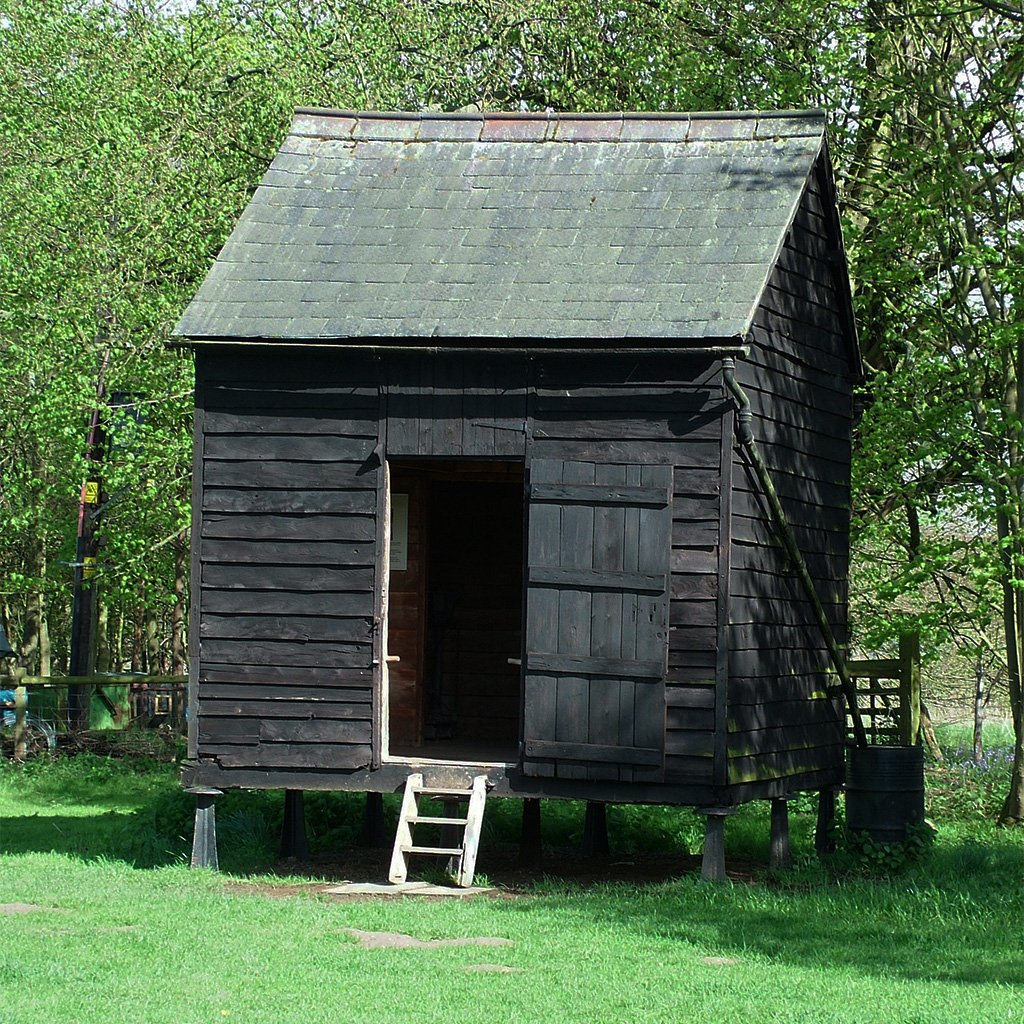
Chiltern Open Air Museum’s traditional working farm is dedicated to presenting farming buildings, techniques and machinery from the past.
Chiltern Farmstead
Our Museum's farm buildings serve as the centre of our farming operations, embodying the essence of a classic Chilterns farmstead that could have thrived anytime between 1800 and 1950. The farmstead is also the base for our ongoing extensive programme of conservation and restoration of historic farming equipment. Much of this is put in to use from time to time throughout the year and can be seen in action.
Cultivating Heritage
We have both cherry and apple orchards. Each individual tree within the orchard is a different variety. During harvest the Museum’s apples are picked and made into apple juice which is sold in the museum’s shop.
We also grow a variety of fresh vegetables in our Dig for Victory allotment. There are a variety of fruit bushes around the site which is harvested and made into delicious jams.
-

Borehamwood Cattle Byre
Originally built to stable horses, this Victorian farm building was later used as a cattle shed. It now houses the Museum’s collection of traditional dairy farming equipment.
-

Gorehambury Cart Shed
Magnificently restored by a small team of volunteers in the 1980s, our timber cart shed displays the Museum’s collection of carts and large farm tools.
-

Hill Farm Barn
The centrepiece of our farmstead, this barn was designed for threshing and was originally located in Chalfont St. Peter, just a few miles from the Museum.
-

Leavesden Apple Store
Used to store our heritage apples in autumn, this attractive wooden structure nestled in our orchard was designed with louvres to promote air flow.
-

Marsworth Cattle Shelter
This distinctive L-shaped thatched building forms a corner of our farmstead and shows how Victorian farmers sheltered their livestock from the elements.
-

Shepherds Living Van
Our farm team members stay overnight in this small living van during the lambing season to watch over our Oxford Down sheep.
-

Wing Granary
The smaller of our two granaries, this was the first building to be re-erected at the Museum in 1978. Built around 1820, it belonged to a bakery and was used to store flour.
-

Rossway Granary
The larger of our two granaries, this impressive two-storey wooden structure could store up to 75 tons of wheat. It features labour-saving chutes to move the grain.
Meet Our Farm Residents
Step into our farm, where rare breed livestock such as sheep, goats, ducks, chickens, and cows coexist. Discover intriguing details about Oxford Down Sheep, the lambing folds used in spring, and the traditional Chiltern method of Sheep Folding
Oxford Down Sheep
Developed in the 1830s through the crossbreeding of Hampshire and Southdown ewes with Cotswold rams, Oxford Down sheep quickly gained popularity in the Chilterns region due to their thriving nature in the sheep folding system. By the early 1900s, these sheep, particularly the rams, became widely sought after both locally and internationally. Farmers in the area strategically crossed Oxford Down rams with other breeds, resulting in the production of fast-growing lambs tailored for the market.
Experience the heritage of these sturdy sheep as you stroll through the Museum grounds, see our Oxford Down sheep grazing and the delightful sight of lambs born in the traditional lambing fold each spring.
Other Farm Animals
As well as our Oxford Sheep, Chiltern Open AIr Museum is home to a variety of animals, including chickens, ducks, and cows. Visitors can experience the sights and sounds of a working farm as they watch the chickens peck for food, the ducks waddle around the pond, and the cows graze peacefully in the fields. Our staff ensure that all the animals are well cared for, and they are happy to share their knowledge and expertise with visitors who are interested in learning more about traditional farming practices. Whether it's the clucking of hens, the quacking of ducks, or the lowing of cows, a visit to our farm provides a true taste of rural life.
Our Sheepdog - Bang
Bang joined the Chiltern Open Air Museum team in 2022. She can often be seen around site with our Estate Manager, Rachael.
Bang’s mum, Meg can sometimes be seen working alongside our shepherd. Both Bang and Rachael have been training to herd our Oxford Down Sheep and Bang made her sheepdog demonstration debut at our Harvest Festival in 2023.
Our new willow sculpture trail features Bang herding three sheep - can you find them at the Museum?
Our Farm on the TV
Our picturesque farm has graced the small screen, featuring in television dramas such as Series 2 of Downton Abbey and The Suspicions of Mr. Whicher, where some of our staff and volunteers had roles as extras.
Dedicated Farming Team
Encounter our friendly volunteer farming team, passionate about different facets of farm life. They are always eager to share insights and engage in conversations about the farm.
Interested in volunteering on our farm? Learn more on our Volunteer Page or email volunteering@coam.org.uk
Read our Blogs
What Our Visitors Say
-
''Simply a lovely family day out… the real highlight was the sheep dog display.”
-
''What a wonderful place. Loved the old forge and the old farm machinery.
-
“Excellent museum, I commend the volunteers for all the work they've done to create this fascinating place.”







